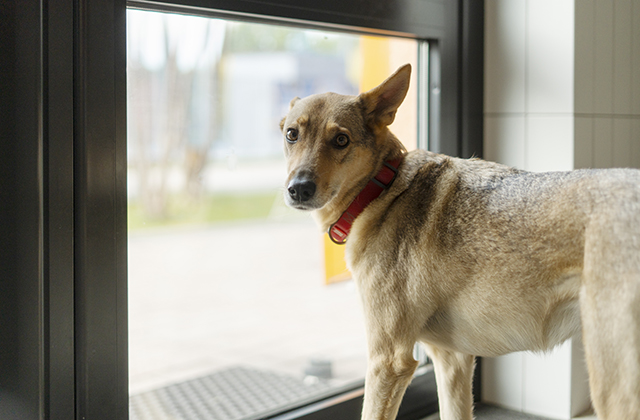Your dining room table is often the centerpiece of your home—a place where meals are shared, memories are made, and celebrations are hosted. With so much daily use, maintaining the beauty and function of your table becomes essential. One simple yet transformative solution is using a glass cover. Not only does it preserve the original surface, but it can also enhance your dining space with elegance and practicality. Here’s why investing in a glass cover is one of the smartest upgrades you can make—and how even replacement glass for dining room table options are helping homeowners refresh their spaces effortlessly.
The Importance of Preserving Your Dining Table
Dining tables, particularly those crafted from wood, marble, or other delicate materials, are vulnerable to damage from everyday activities. Heat marks from hot dishes, scratches from utensils, spills from drinks, and even fading from sunlight exposure can quickly degrade the surface.
Without protection, your table can lose its aesthetic appeal, diminishing the charm of your dining room over time. Restoration or replacement of a worn-out table is costly and often unnecessary if proactive measures are taken early. A fitted glass cover acts like a shield, preventing direct contact with damaging elements while showcasing the table’s natural beauty.
How a Glass Cover Enhances Your Dining Room
Beyond protection, a glass cover adds a layer of sophistication and modernity to your dining room décor. Clear and glossy, it highlights the table’s craftsmanship, making wood grains, marble veining, or intricate designs even more noticeable.
Here’s how a glass cover elevates the look and feel of your space:
- Creates Visual Depth: Glass reflects light, making your dining area appear brighter and more spacious.
- Modernizes Older Furniture: Even traditional or antique tables gain a contemporary touch when topped with glass.
- Customizable Options: Choose between clear, frosted, tinted, or even beveled-edge glass to match your style preferences.
When damage eventually occurs—whether from accidents, impacts, or just the passage of time—finding a replacement glass for dining room table is a cost-effective way to maintain your investment without having to replace the entire piece of furniture.
Advantages of Choosing Glass Covers
Choosing a glass cover for your dining table offers several practical benefits:
- Durability: Tempered glass is incredibly strong, offering better resistance against shattering compared to standard glass.
- Easy Maintenance: Glass covers are simple to clean. A quick wipe with glass cleaner keeps them looking brand new.
- Heat Resistance: Proper glass covers can handle the heat from warm dishes without marking or warping.
- Allergy Friendly: Unlike tablecloths, glass doesn’t collect dust or allergens, making it a healthier choice for your home.
- Custom Fit: Glass can be tailored exactly to the shape and dimensions of your table, ensuring a seamless look.
Moreover, as styles change or accidental cracks occur, sourcing a replacement glass for dining room table is straightforward. Local glaziers or specialty online providers can create a new cover based on your table’s specifications.
FAQs About Glass Covers for Dining Tables
1. Is tempered glass necessary for a dining table cover?
Yes, it is highly recommended. Tempered glass is about four to five times stronger than regular glass and, if broken, shatters into small, blunt pieces rather than sharp shards, making it much safer.
2. Can I use a glass cover for any type of dining table?
Absolutely! Whether you have a wooden, marble, metal, or even a painted table, a glass cover will work to protect and enhance it. Glass can be customized to fit any shape, from rectangular to oval to round.
3. What thickness should the glass be for my dining table?
For most residential dining tables, a thickness between 6mm (¼ inch) and 12mm (½ inch) is ideal. Heavier, larger tables may require thicker glass for extra strength and durability.
4. How do I clean my glass dining table cover?
Cleaning is easy—simply use a soft cloth with a mild glass cleaner. Avoid abrasive sponges that could scratch the surface. Regular wiping will maintain its shine without any heavy scrubbing required.
5. How do I replace a damaged glass cover?
If your glass cover gets damaged, finding a replacement glass for dining room table is straightforward. Measure the dimensions of your table carefully, including any special shapes or beveled edges, and order a new piece from a glass supplier.
6. Will a glass cover slip or move around?
Generally, no. Most glass covers are heavy enough to stay in place. For added stability, small rubber pads or clear bumpers can be placed at the corners to prevent sliding and protect both the table and glass.
When to Consider a Replacement Glass
Even the most durable glass covers may eventually suffer chips, cracks, or visible scratches over many years of use. Instead of investing in a whole new dining table, opting for a replacement glass for dining room table can restore the original beauty and functionality at a fraction of the cost.
Whether you’re refreshing the look of your dining space or recovering from an unfortunate accident, replacement glass is a quick and easy solution. Many suppliers can even improve upon your original with options like anti-glare coatings or decorative edging.
Conclusion: A Smart, Stylish Investment
Adding a glass cover to your dining table is not just about protection—it’s about elevating your living space with elegance and practicality. It preserves the beauty of your table, extends its lifespan, and enhances the overall style of your dining room.
Whether you are installing a new glass cover or searching for a replacement glass for dining room table needs, the benefits are undeniable. Durable, beautiful, and easy to maintain, a glass cover ensures that your dining table remains a centerpiece of joy, style, and functionality for years to come.


